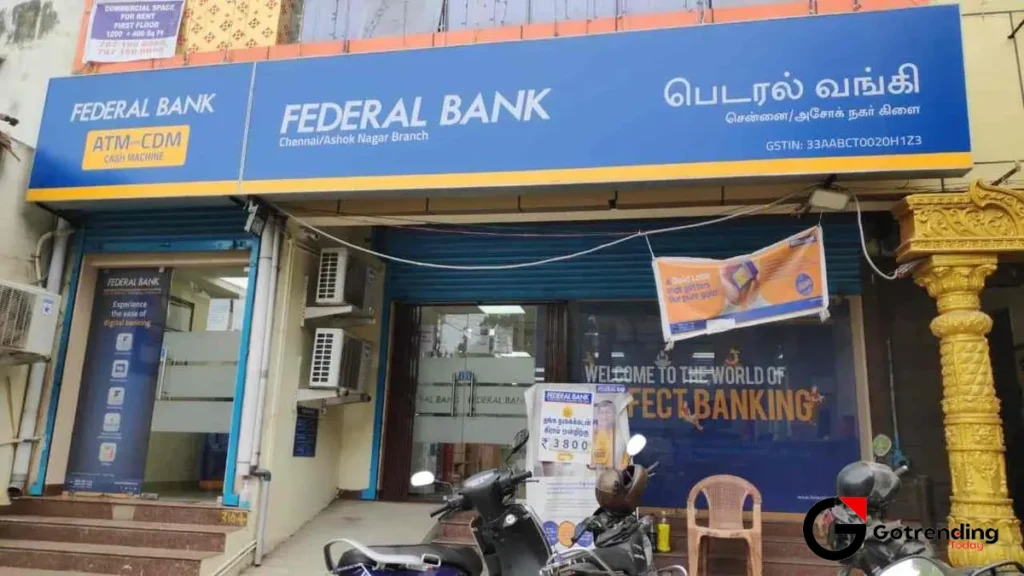Why is Everyone Talking About the Federal Bank Share Price? An Analyst’s Deep Dive
Let’s have a coffee-shop chat about a stock that’s, well, a bit of an enigma. It’s not a flashy, high-flying tech stock. It’s not a behemoth like HDFC or ICICI that dominates headlines. It’s Federal Bank. And if you’re an Indian investor, you’ve almost certainly come across it, maybe even own it, and have probably asked yourself the same question I have: “What is the deal with this stock?”
The federal bank share price seems to live in a perpetual state of being “interesting.” It’s always on the cusp of something. Analysts love it, retail investors are intrigued by it, and yet, it often feels like a car revving its engine at a red light that never quite turns green. It chugs along, shows promise, but rarely gives you that exhilarating burst of speed.
Here’s the thing. I initially thought this was a straightforward, almost boring, story. A solid, old-school private bank doing its thing. But the more I dug, the more I realised that’s not the full picture. Not even close. What fascinates me is the paradox at its core a conservative, “safe” bank that is quietly building a seriously impressive, tech-forward growth engine under the hood. So, let’s pull back the curtain and figure out why this bank is such a curious case and what it really means for you as an investor.
The ‘Boring is Beautiful’ Foundation | Why Federal Bank is Rock-Solid

First, you have to understand Federal Bank’s DNA. This isn’t some new-age bank that just popped up. It has deep roots, tracing back to pre-independence India. For decades, its identity has been intrinsically linked to Kerala and the massive inflow of NRI remittances.
And that’s its first superpower: a ridiculously loyal and stable deposit base. Why does this matter? In banking, deposits are the raw material. The cheaper and more stable your raw material, the better your business. Federal Bank has a very strong CASA ratio (Current Account and Savings Account). Think of CASA as the cheapest money a bank can get. People park their salary in a savings account or their business cash in a current account, and the bank pays very little (or no) interest on it. A high CASA ratio is like a secret sauce for profitability, and Federal Bank has traditionally been very good at this, thanks to its NRI stronghold.
This conservative approach also shows up in its asset quality. We’ve all heard horror stories of banks giving out massive loans that go bad, creating huge NPAs (Non-Performing Assets). Federal Bank has historically been quite prudent. Its management has a reputation for being risk-averse, which means you don’t see many wild, negative surprises. This is the “steady Eddie” part of its personality. It’s the kind of bank your grandfather would approve of. This strong foundation is a key part of any federal bank fundamental analysis .
But if that was the whole story, the stock would be truly boring. And it’s not.
The Hidden Growth Engine | This Isn’t Your Grandfather’s Bank Anymore

Here’s where it gets exciting. Over the past few years, a quiet revolution has been happening inside this “old” bank. The management realised that being a Kerala-centric bank wasn’t enough for long-term growth. So, they started firing on all cylinders in two key areas.
1. Aggressive Geographic Expansion: The bank has been methodically and aggressively expanding its footprint outside of its southern comfort zone. They’re opening branches in the North and West, targeting high-growth metropolitan areas, and building a more diversified loan book. This is crucial. It reduces their dependency on a single region and opens up a much larger market.
2. The Digital & Fintech Push: This is the part that truly shocked me. Federal Bank is, and I don’t say this lightly, one of the most digitally savvy old-school banks out there. They’re not just launching a clunky mobile app. They are building a genuine digital ecosystem. They have strategic partnerships with fintech giants like Jupiter. Their focus on API banking and their subsidiary, Fedo, shows a forward-thinking approach that rivals even some of the newer players. They are embedding themselves into the digital economy, which is a massive, long-term positive trigger.
So, you have this fantastic combination: a rock-solid, low-cost deposit franchise (the “boring” part) combined with a hungry, tech-driven growth engine (the “exciting” part). It’s a “value plus growth” story that, on paper, should be a screaming buy. Which leads us to the big question…
The Elephant in the Room | If It’s So Good, Why Isn’t the Share Price at ₹250?

Ah, the million-dollar question. If the fundamentals are strong and the growth story is compelling, why is federal bank share falling or stagnating at times? Why hasn’t the market fully rewarded it? A common trap investors fall into is looking at fundamentals in a vacuum. The market is a complex beast driven by sentiment, perception, and future expectations. For Federal Bank, a few key factors are acting as an overhang.
First, there’s the perception problem. It’s still seen by many as an “old private sector bank.” It doesn’t have the glamour of Kotak or the sheer scale of ICICI. In a bull market, investors often chase the shiniest objects, and Federal Bank is more of a quiet achiever. As you can see with other stocks, like theDixon share price, market perception can create significant momentum.
Second, and this is probably the most significant near-term factor: leadership uncertainty. The tenure of its long-serving and highly respected MD & CEO, Shyam Srinivasan, is coming to an end. He’s widely credited with the bank’s transformation. The market hates uncertainty. Until a new CEO is named and the market is confident that the new leader will continue the same successful strategy, the stock might remain under pressure. A smooth transition is critical.
Finally, let’s talk valuation. The stock often trades at a discount to its larger peers based on its Price-to-Book (P/B) ratio. While bulls argue this makes it cheap, bears argue the discount is justified due to its lower Return on Assets (RoA) compared to the top-tier banks. The latest federal bank q4 results were decent, but perhaps not spectacular enough to break this perception decisively.
Key Triggers to Watch | What Could Finally Unleash the Stock?
So, if you’re holding this stock or thinking about it, what should you be watching? Forget the daily noise. Focus on these three potential catalysts.
- The New CEO Announcement: This is Numero Uno. A strong, credible successor, ideally an internal candidate who understands the bank’s culture or a respected external hire with a clear vision, could be the single biggest re-rating trigger for the stock.
- Consistent Execution in Quarterly Results: Look beyond the headline profit number. Is the loan growth outside of the South still strong? Is the Net Interest Margin (NIM) stable or improving? Are the digital metrics growing? Consistent performance here will prove the growth story is real.
- Monetization of Digital Assets: Any news about the bank unlocking value from its fintech subsidiaries or partnerships could get the market very excited. It would validate their digital strategy in a tangible way.
Tracking these developments is key to understanding where the federal bank share price is headed long-term.
Frequently Asked Questions
What’s a good price to buy Federal Bank shares?
Instead of a specific price, it’s better to think in terms of valuation. Historically, the stock has been considered attractive when its Price-to-Book (P/B) value is near or below 1.2. Compare its current P/B ratio to its historical average and to its peers like IDFC First Bank or City Union Bank to gauge if it’s undervalued. The real answer depends on your risk appetite and investment horizon.
What are the main risks of investing in Federal Bank right now?
The top three risks are: 1) A botched CEO transition that spooks the market. 2) Intense competition from larger private banks and nimble fintechs eating into their margins. 3) Any unexpected downturn in the economy that could impact loan growth and asset quality across the entire banking sector.
Is Federal Bank a good long-term investment?
Based on its strong liability franchise, digital-first approach, and expanding footprint, the long-term story is compelling. It has the ingredients to become a much larger bank. However, the investment thesis rests on the successful execution of its growth strategy by the new leadership. Patience will be key.
Why are NRI deposits so important for Federal Bank?
NRI deposits, particularly the funds in NRE/NRO accounts, are a stable and relatively low-cost source of funds. This strong base, built over decades of trust, gives the bank a competitive advantage in managing its cost of funds, which directly impacts its profitability.
Where can I find the latest federal bank news and results?
For the most reliable information, always go to the source. You can find official announcements, financial results, and presentations on the investor relations section of the Federal Bank website and on theNational Stock Exchange (NSE)website. It’s always a good practice to check these primary sources onGoTrendingTodayand other platforms.
So, we come back to our coffee. Is Federal Bank boring? On the surface, maybe a little. But ‘boring’ in banking often means stable, safe, and predictable which are wonderful qualities. The real story is that this ‘boring’ bank is undergoing a quiet, deliberate, and impressive transformation.
Investing in it is a bet on execution. It’s a test of whether you believe that, over time, solid fundamentals and a smart growth strategy will win out over market sentiment and glamour. The stock might not give you the thrill of a rollercoaster, but it could just be the steady train that gets you to your destination. The real question is whether you have the patience to stay on for the ride.













